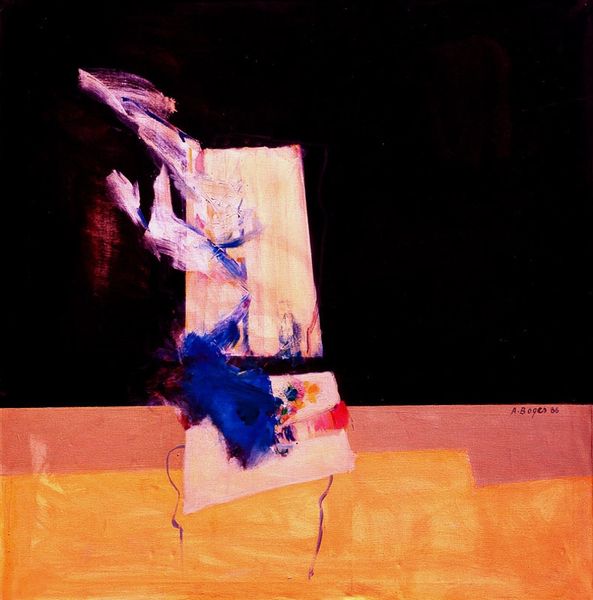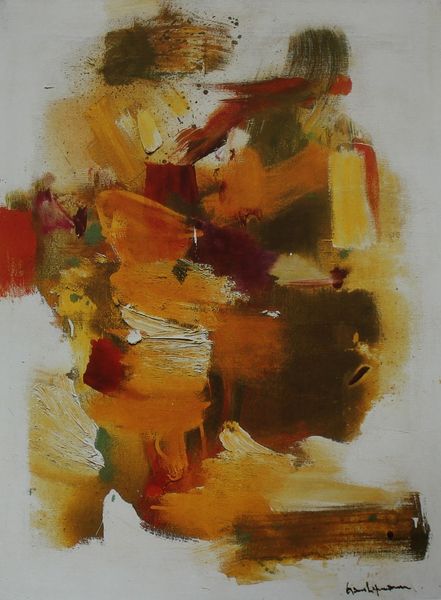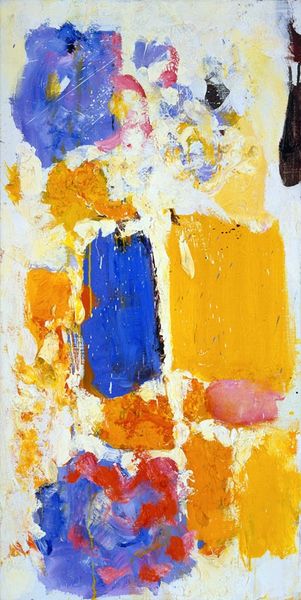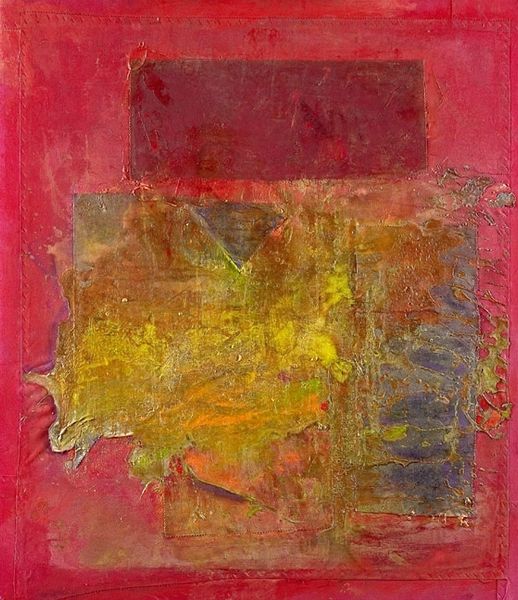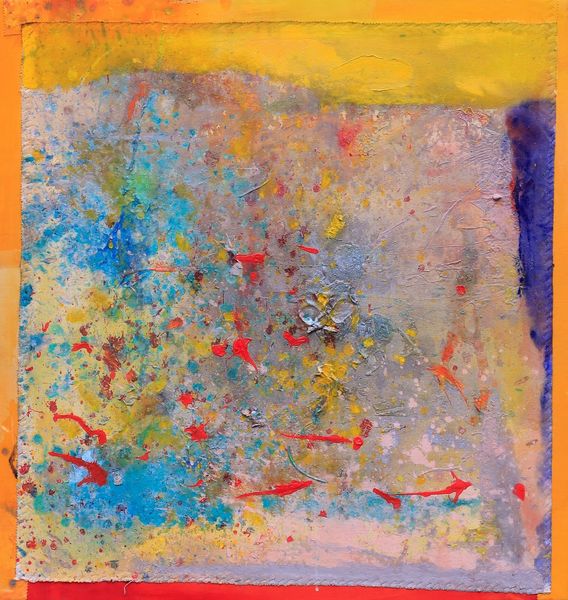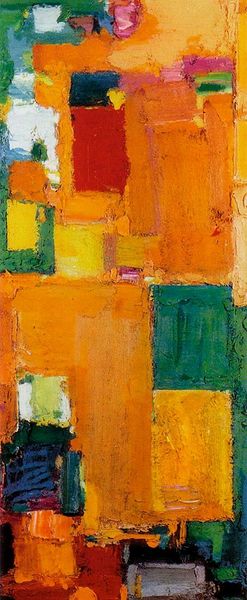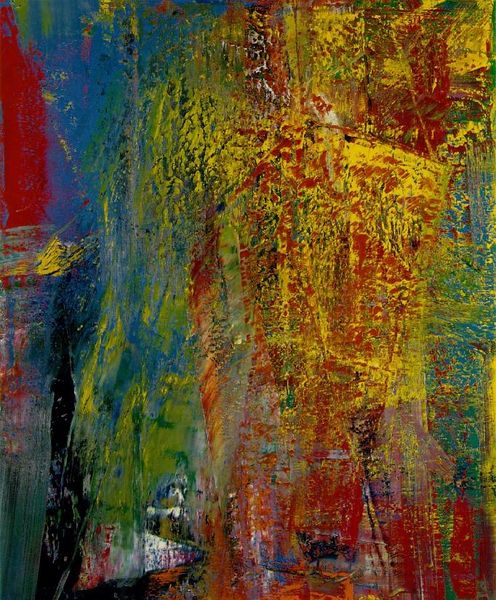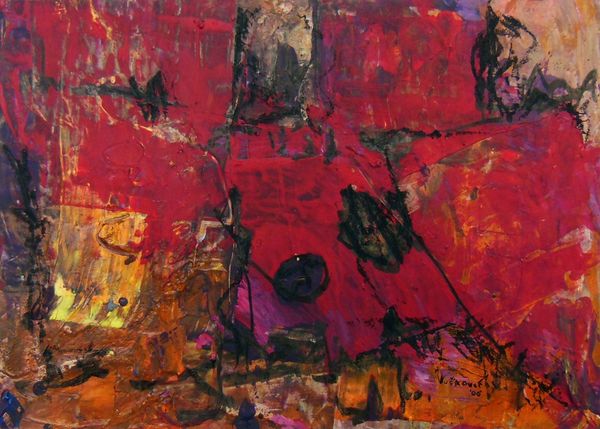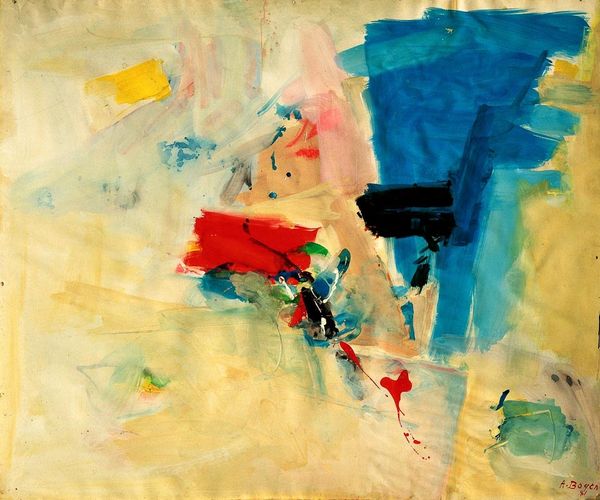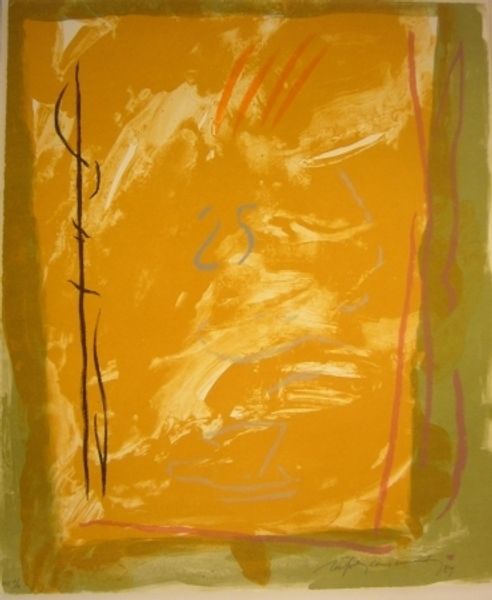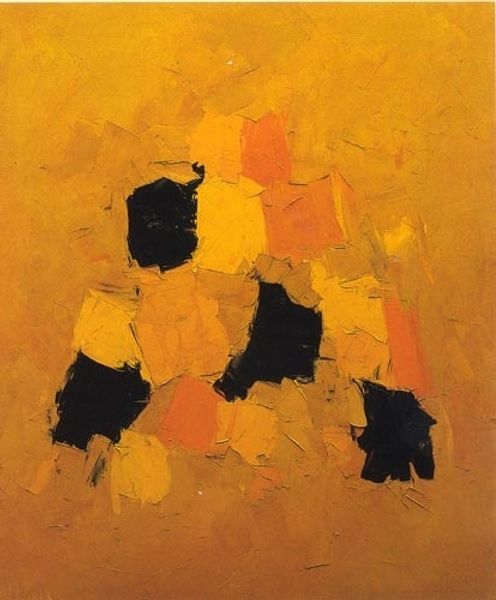
Copyright: Alexander Bogen,Fair Use
Editor: Here we have Alexander Bogen's "Negev," painted in 1991 using acrylic on canvas. It's…striking. The almost brutal application of bright yellow makes it seem unfinished, raw. What strikes you about this piece? Curator: What's fascinating is how the materiality pushes against the conventional understanding of landscape. Here's the 'Negev,' conjuring a desert, traditionally painted with soft, muted tones. But Bogen uses acrylic – a distinctly modern, almost industrial medium – applied in thick layers. Consider the socio-economic context: Israel in 1991, a nation building itself, literally and figuratively. Do you think the medium itself speaks to that? Editor: That's interesting. The acrylic feels less "art for art's sake" and more like…construction material? How does that influence our understanding? Curator: Precisely. The very act of painting becomes a form of labor, a construction process mirroring the building of the nation itself. Look at the visible brushstrokes, the uneven texture. He isn't hiding the "making" of the piece; he's highlighting it. The consumption of art in this era was shifting; it wasn't just about aesthetic pleasure, but about engaging with a cultural statement, the social and historical context within. Do you agree? Editor: Definitely! It's less about beauty and more about… bearing witness, maybe? You almost feel the effort, the physical act of creation. Curator: Exactly. The piece asks us to consider the artist’s labor, the materials' origins, and their contribution to a visual landscape reflecting a very specific historical moment. It makes me wonder how much the production influenced his practice and artistic output. Editor: I'll definitely be thinking about the "how" of art a lot more now, not just the "what"!
Comments
No comments
Be the first to comment and join the conversation on the ultimate creative platform.
